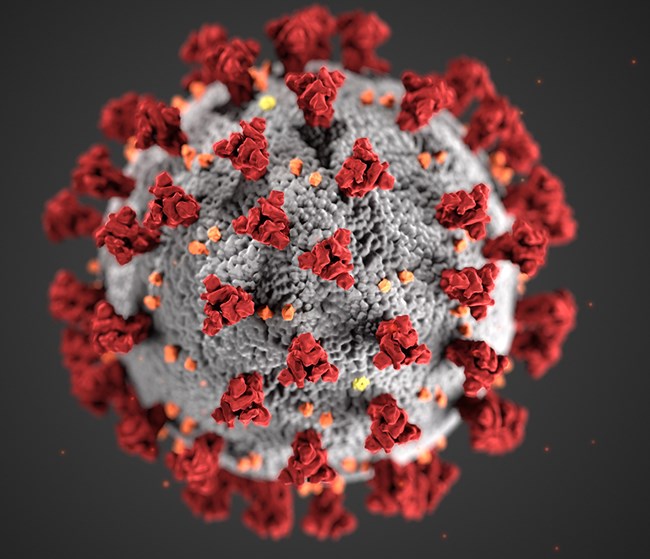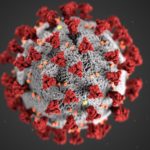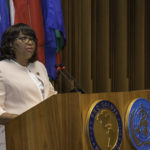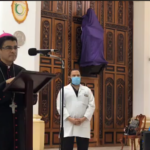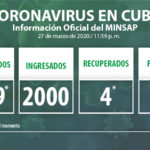Carlos Sáenz comes on television every day. He sits at a table, surrounded by microphones and reads a prepared statement.
As secretary general of the Ministry for Health (MINSA), he holds the third highest ranking position in the ministry.
He has become the face of COVID19 communications, but he never takes any questions.
No one expects him to.
In Nicaragua, Answering questions during a government press conference runs counter to the official communication strategy, which was set in 2007, when Daniel Ortega returned to the presidency. Communication gained strategic importance, as a vehicle to convey “achievements, […] security, trust, and faith, […] and to use ‘our’ media so that ‘our’ information comes out uncontaminated, and direct,” among other goals.
Sáenz fulfills these tasks, every day, at press conferences that are one-sided affairs, attended only by outlets that are part of the Ortega-Murillo Propaganda Machine. These are media owned by the state, by the Sandinista Party, by members of the Ortega-Murillo family or by their surrogates.
This is not an ideal scenario for effective risk communication.
Within the area of health communication, risk communication is a specialized field that allows states and organizations to “exchange […] real-time information, advice and opinions between experts and people facing threats to their health, economic or social well being.” In fact, the goal of risk communication is to use every available communication tool and strategy to help people understand these risks and make “informed decisions”, when faced with them.
The COVID-19 pandemic requires effective risk communication strategies. That includes not just messages that explain concepts like “flattening the curve,” or teach people how to wash their hands. It also includes communication that conveys the extent of the risk people may be facing.
According to the WHO’s COVID-19 Preparedness and Response Guide, “People have the right to be informed about and understand the health risks that they and their loved ones face.” It is difficult to do that without accurate, clear, and complete case counts.
Unfortunately, that is not what MINSA provides during their daily press conference. Today’s report, for example, includes contradictory information, conveyed through verbose and confusing language.
We have three people, total, with COVID-19:
Three stable and cared for.
All imported
In other words, MINSA people currently under care contracted COVID-19 while abroad, and showed symptoms once in country. However, the detailed case description contradicts this, as one of the cases contracted COVID-19 through local contact with “an imported case.”
We detail:
A 64-year-old gentleman, who was in contact with an imported case. He is stabled and being cared for.
A 59-year-old gentleman, who was in contact with other nationalities. He is stable and being cared for.
A 39-year-old lady, imported case. She is stable and cared for.
MINSA’s press release gets even more confusing when it comes reporting cumulative number of cases so far. They say the following:
Yesterday, we had 10 people under responsible and careful surveillance. Two of them have fulfilled the required quarantine period, and today, they go to shelter at home. There are 8 people left, to which we add four more, for a total, this morning, of 12 people under responsible and permanent care and monitoring.
We have no local community transmission.
All through the infinite grace of God!
In other words, there are 12 suspected cases under surveillance, with no local community transmission. However, to find out the cumulative number of cases, you have to dig back through several weeks of reports and do math, or consult the WHO daily Situation Report.
As of April 15, the WHO reports 9 COVID-19 confirmed cases and one death in Nicaragua. The organization has not assigned a transmission classification, perhaps because it is not possible to determine the extent of infection without widespread testing and accurate case counts.
MINSA’s approach to risk communication fails because it conflicts with the overall propaganda goals that are set by Rosario Murillo, who has no background in epidemiology or any medical training, but fancies herself as an effective communicator.
